A Meditation Around Alan Trachtenberg’s bookReading American Photographsand John Brownlow’sHuman Trafficproject.
ByMike Johnston
Illustrated with photographs byJohn Brownlow
This is an important essay not only because it casts a fresh perspective on a complex topic but also because this page contains some of the most exceptional "street" photography that I’ve encounteredin recent years. The essay has never appeared in print anywhere before this.
Mike’s essay requires that the reader think and absorb. John’s photographs need more than a casual glance — they need to be "seen". I’m pleased as well as proud to be publishing both on these pages.I hope you enjoy the combination.
Michael Reichmann
June, 2001
Twelve years ago, I did a modest little photographic documentary project called "Ocean City, Maryland, August 1989." It consists of twenty-three pictures taken in and around that city in that month. I shot some 40 rolls of pictures in four visits to Ocean City. At one point I rented a helicopter and shot beachgoers from the air. The finished set of pictures wasn’t made for any particular reason; I just organized it into a project to help give my activity some direction.
As a set of pictures it does contain, however, one small deception. The seventeenth image, a picture taken from above of a speedboat under power against a background of the water’s surface, was taken from a bridge above the Potomac River on the border between the District of Columbia and the State of Virginia, some hundred and ten miles from Ocean City, some two years earlier. At the time, I thought it looked well with the other pictures. Every other photograph out of the twenty-three I ended up using, whatever else it may or may not be, is indeed an authentic document of Ocean City and its environs on the eastern coast of the Delmarva peninsula in August of 1989.
You may think that the inclusion of this "ringer" photograph in the set is of no particular significance. As lies go, it is no very Machiavellian betrayal. Aesthetically, the shot blends nicely with the other photographs, augmenting the helicopter views and allowing them to segue more effortlessly to the surf photographs with which the sequence ends. Its meaning fits seamlessly as well: if it was in fact not taken in Ocean city, most viewers would be well satisfied that itmighthave been. So the deception is not one which is likely to cause much dismay or excite much outrage, even after the truth is revealed.
And of course it is not even a very original way of telling a lie. This is proved not only by the existence of deliberately fictional or propagandistic photographs, but in fact by the captioning or at least the implications of most editorial and advertising photography. Gisele Freund provides excellent examples of this in bothThe World In My CameraandPhotography & Society. "The objectivity of a photograph," she says, "is only an illusion. The captions that provide the commentary can change the meaning entirely." Ralph Steiner, in a demonstration I saw him give at Dartmouth College, set the same clip of motion picture film to four different snippets of music; not only was the feeling-tone and the apparent meaning of the film clip entirely changed in each case, but some five out of six viewers (including myself) believed that the clips in each case were different in either content, editing, or length, or all three, when in fact each clip was absolutely identical. In other words, had I represented that the picture of the boat was taken with the other pictures in Ocean City in 1989, most viewers, however critical or intelligent, would have had little reason, and little recourse, but to take that assertion at face value.
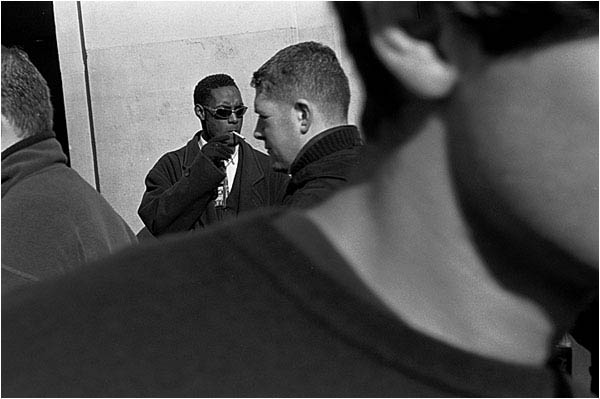
Relativism is Everywhere
It is demonstrable that to study for the sake of scholarship only those photographs intended self-consciously as "art" would be not only limiting but also positively misleading. It is also obvious that a certain critical relativism is popular these days. Under the terms of this relativism, pictures of equal validity may be "found" anywhere, because all photographs are thought to be equally indeterminate as regards their real meaning, despite the evident assumptions or intentions of whoever made them. Both of these factors may have led savants into believing that photographs from any and all sources may be of equivalent relevance or merit: a snapshot is as good as a newspaper photograph which is as good as an advertising photograph which is as good as a picture found in an old box at a yard sale. For the scholar, this may in some sense be true: all kinds of pictures are potential clues to unlocking the mystery of the nature of the photographic enterprise, and no photograph should be ignored simply on account of an ungainly provenance.
For the contemporary documentary photographer who is personally engaged and involved in the authorship of sets of pictures, however, relativism is destructive. It robs him of the very worth of what he is trying to assert: that he has something to show, that his subject and his interpretation and his skill in making the photograph has a value and a meaning because of what he has invested in it, such that it deserves to be looked at and considered carefully. The relativists are saying that no photographer is really in adequate control of what his photographs mean, that photographs are as easily and as persistently accidental as they are intentional, and that they may be reinterpreted at will and often become more interesting after that reinterpretation is carried out.
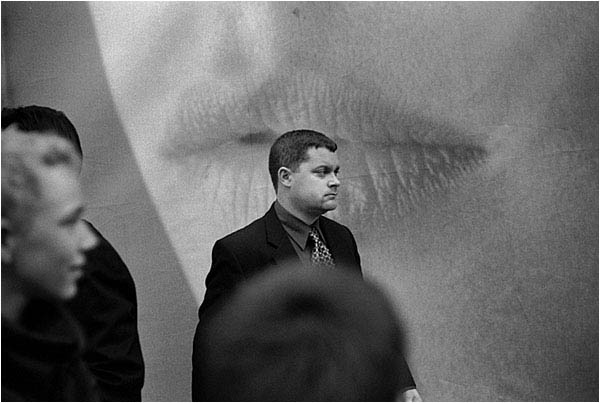
This is as sensible to me as insisting that the subtler symbolism in a literary work is coincidental. Much of what the photographer has to offer is hisintentionfor his work, which is another way of saying the pursuit and the reification of his vision, his interpretations, his presumptions, or his concerns; his work may be judged insufficiently successful in communicating that vision, or the intent itself may be found unsympathetic, arcane, trite, superficial, or obscure, but surely when he succeeds it is at least partially because he has tried for some worthwhile goal and achieved it. In fact, many of the great accomplishments in photography’s history were authored, from Walker Evans’sAmerican Photographsto the magnificent anthropological project of Edward S. Curtis to the great portraitscapes of Sander. Imagine trying to respond intelligently to Robert Adams’sLos Angeles Springwhile ignoring altogether what Adams is trying to say about what we have done to our environment ("All that is clear is the perfection of what we were given, the unworthiness of our response, and the certainty, in view of our current deprivation, that we are judged") — it hardly seems possible. Yet that is the logical extension of the basic claim made by the relativistic approach to photography, which has lately been so popular.
The Case for Authorship
Yale professor Alan Trachtenberg’s 1989 bookReading American Photographsmay, along these lines, be one of the most hopeful works of scholarship written about photography in recent decades. In it, he assumes that there is historical value in photographs not only as visual records, "Illustrations of the past, of the look of people, events, and things," but also as records of how and what self-conscious photographers wanted to show of their culture and their surroundings, how they assumed their audiences would respond, and whether they succeeded: "The point of view of the photograph itself, the interpretation it allows viewers to make of its subject." He limits his scholarly inquiry to deliberative sets of pictures, or bodies of work, by major photographers. This is to presume that there is a case forauthorship, to assume that the best bodies of work from the past are indeed informed by intelligence and intention and are capable of remaining functional and valuable in those terms.
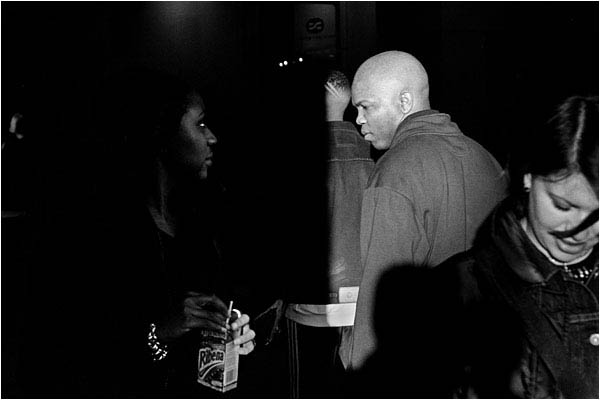
In other words, quite remarkably, Trachtenberg has decided that it is worthwhile taking photographers of sufficient stature at their word — as if they were intelligent, sensitive, perceptive men and women rather than some species of trained baboon who happened to have been pointing cameras around every which way for no particular reason. Instead of constructing some meta-rumination on some philosophical level far removed from the artist’s original intention (an intention which is presumed in most such cases to be banal and obvious, the philosophical stance of the commentator thereby becoming an expression almost ofpity), he assumes that the authorship of major bodies of work will say something important about the social history of the time in which they were made, the attitude of their maker towards his subject, and the interplay between the photographer, the work, and the audience. Trachtenberg is interested not so much in how these photographs function in spite of themselves, but also how they function as their makers thought they would and as their original audience perceived them to. That he is interested at all in photographs as intelligent, purposeful social expression and communication make him, these days, all but unique.
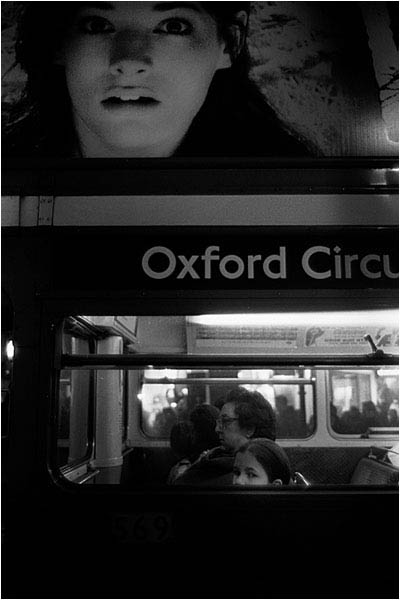
It may be tempting to pessimistically assert that it is no longer necessary to take photographs from life to document the look of world today — that television and video and multimedia perform that task. I can only send up the plaint that photographs as single objects can be graphically beautiful in a way that none of the more insistent media can be, while being connected to reality in ways that more beautiful graphical objects (such as paintings) can’t be. The way the world sorts itself into sights that gratify us when we look at the pictures of it is frequently astonishing, and pleasing. It’s true that photographs charm with their truth, but the accidents and incidents of visual beauty charm us, too.
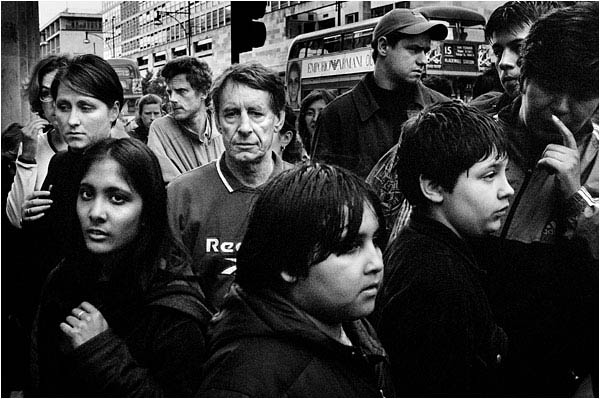
Film director John Brownlow, a.k.a. Johnny Deadman, spent a year in a frenzy of work documenting the crowds in Oxford Street in London, in a remarkable body of street photography that to my mind stands with the work of Winogrand and William Klein. Not only that, but he has essentially laid his working method bare for the world to witness, putting up large amounts of raw shooting athis website along with loose and hard edits. Those of us watching got to watch him construct his work. (I dearly hope that the world of art photography has not fallen so far from its glory days that this work will never become a book; it simply begs to be published.) Spend some time with his pictures: the beauty of them is often quite intense, and yet their plain truth is bracing.
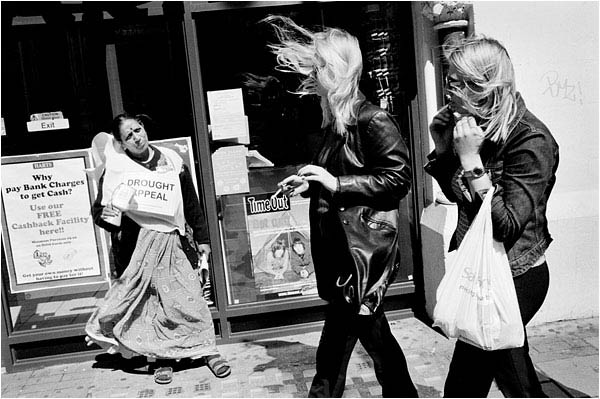
Alan Trachtenberg’s approach should prove remarkably liberating to working documentary photographers such as John Brownlow — who are in essenceauteurs ‚ especially in the context of the current debilitating critical climate. All photographs become historical, to some degree, as the moment in which they were made recedes away from the present. Trachtenberg’s approach gives hope to working photographers that there may at leastpossiblystill be some purpose in trying to construct sets of photographs which will someday have some authenticity not only as a visual record but as social history and in terms of communicative intent, and that they might retain a coherent sense of authorship as time passes: not, of course, because they can show with absolute objectivity whatwas(few of us believe in that possibility any more), but that the point of view of the photographer and the interpretations of his subject he encourages among his audience will remain valuable to know about as well.
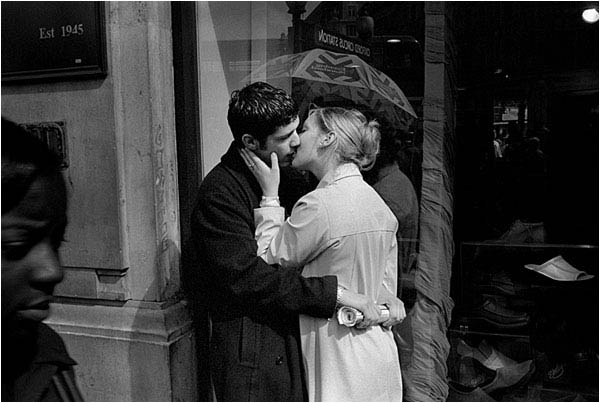
It is in this context, and not the context of the more fashionable prevailing relativism, that my one false picture, that lie I told back in 1989,doesmatter, and I feel grateful to be able to believe that it does. Personally, I am resolved that my inclusion of that "ringer" photograph in this set of pictures is the last lie I will deliberately tell in my work. Authentic photography must at least try to be honest, so that, at the very least, the tone of these times — the way we choose to perceive ourselves and our surroundings, at least when uninfluenced by immediate and pressing external directives — might presumably be made more comprehensible, even valuable, to posterity. Reaffirming this has helped allow me to see documentary photography like John’s more as a matter of honor and not just of empty graphic facility or emotional opportunism, and for that I owe Alan Trachtenberg a debt of gratitude.
It is in this way that the photographer’s work might eventually come be seen as incrementally more trustworthy in some measure than it might have been otherwise, or than it would be by accident, at least as regards how he chose to investigate what he saw and how he chose to try to communicate his viewpoint. In that way posterity might be disposed to believe the photographer is not oblivious, that the photographerthinks, and that the meanings and the feeling-tones and the subjective content that viewers discover in the pictures are, if sometimes fortuitous, at least not entirely circumstantial. Not because the camera can’t lie, but simply because certain photographers can be trusted to make it tell the truth.
Copyright 2001 by Michael C. Johnston
Mike Johnston, a graduate of the Corcoran College of Art and Design in Washington, D.C., was East Coast Editor ofCamera & Darkroommagazine from 1988 to 1994 and Editor-in-Chief ofPHOTO Techniquesmagazine from 1994-2000, where his editorial column "The 37th Frame"was a popular feature. His critical and technical writings have appeared in various publications and newsletters in the United States and England. Mike’s writing will be published regularly onThe Luminous Landscape.
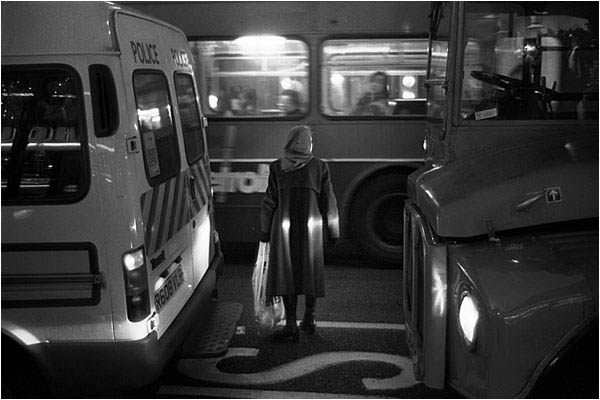
John Brownlowis a British-born writer and filmmaker who has made many films for British television but now works as a movie screenwriter. He pursues photography seriously, but not for pay. However, he works exceedingly hard at it: he says onhis website, "So much striving for so little result! But as always I am reminded of the words of Robert Frank, himself quoting Malraux, when he wrote in his Guggneheim application: "One is ashamed to want so much for oneself. But how else are you going to justify your failure and your effort?’" John and his family currently reside in Canada.
This piece is part of an on-going series of articles, reviews and essays written for this site byMike Johnston
publisher ofThe 37th Frame
For additional articles related to street photography on this site you can starthere.
You May Also Enjoy...
Memories of Wildflowers
Please use your browser'sBACKbutton to return to the page that brought you here.
